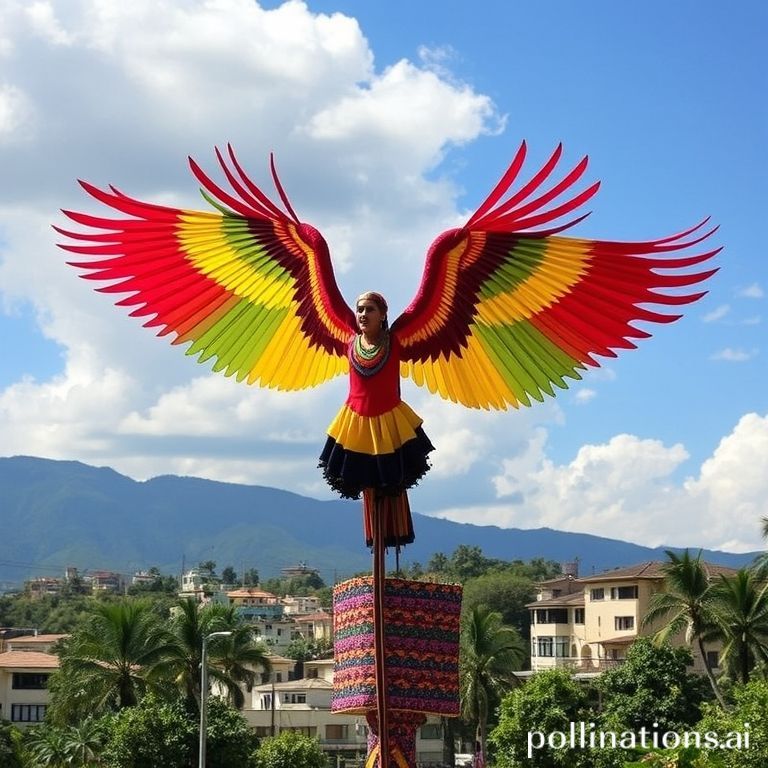Mexico is a land of vibrant traditions, ancient customs, and breathtaking celebrations. Among its many captivating spectacles, the Festival of the Voladores, or “birdmen,” stands out as a particularly mesmerizing display of courage, spirituality, and cultural heritage. This ancient Mesoamerican ritual, deeply rooted in indigenous beliefs, continues to captivate audiences with its daring aerial performance and profound symbolism. Prepare to be amazed as we delve into the heart of this unique and awe-inspiring tradition.
The Danza de los Voladores, as it is also known, is more than just a performance; it is a profound connection to the natural world and a powerful expression of gratitude to the gods for the bounty of the earth. Declared an Intangible Cultural Heritage by UNESCO in 2009, the ritual has been passed down through generations, ensuring its survival and continued significance in modern Mexico.
Origins and Significance
The Festival of the Voladores is believed to have originated with the Nahua, Otomi, and Huastec peoples of Mexico. Legend has it that a severe drought plagued the land, and the gods demanded a sacrifice. The Voladores ritual was conceived as a plea to the gods to restore fertility to the earth and ensure a plentiful harvest. The dance represents the four elements – earth, wind, fire, and water – and honors the cycles of life and nature.
The Sacred Pole
At the heart of the Voladores ceremony is a towering pole, typically made from a carefully selected tree. This pole symbolizes the connection between the earth and the heavens, serving as a conduit for communication with the divine. Before it is erected, the pole is treated with great reverence, often adorned with offerings and prayers.
The Ritual Attire
The Voladores dress in elaborate costumes that reflect the symbolism of the ritual. These costumes usually include:
- Brightly colored hats decorated with flowers and feathers, representing birds and the vitality of nature.
- Embroidered pants and shirts, often adorned with intricate designs that depict ancient symbols and stories.
- Bandanas and sashes, adding to the visual spectacle and representing different aspects of the natural world.
The Performance
The Voladores performance is a breathtaking display of skill, coordination, and bravery. It involves five participants:
The Caporal (Leader)
The Caporal is the central figure of the ritual. He stands atop the pole, playing a flute and drum to invoke the gods and direct the dance. His music sets the rhythm and pace of the performance, guiding the Voladores as they descend.
The Voladores (Flyers)
The four Voladores represent the four cardinal directions and the elements of nature. They climb to the top of the pole and tie themselves to ropes. At the Caporal’s signal, they leap into the air, spiraling downwards around the pole as the ropes unwind. This descent symbolizes the descent of rain and the return of fertility to the earth.
The Descent
As the Voladores descend, they rotate around the pole thirteen times each. This number is significant because it represents the 52-year cycle of the Mesoamerican calendar. The combined rotations (13 x 4 = 52) symbolize the completion of a full cycle and the renewal of life.
Where to Witness the Voladores
The Festival of the Voladores can be witnessed in various locations throughout Mexico, particularly in the states of Veracruz, Puebla, and San Luis Potosí. Some of the most popular places to see the performance include:
- Papantla, Veracruz: Considered the heartland of the Voladores tradition.
- El Tajín, Veracruz: An ancient archaeological site where the ritual is frequently performed.
- Cuetzalan, Puebla: A charming town known for its indigenous culture and vibrant celebrations.
- Xilitla, San Luis Potosí: Home to the surreal Las Pozas garden and a rich tradition of the Voladores.
When planning to see the Voladores, it’s advisable to check local schedules and festivals. The performances are often held during religious celebrations, cultural events, and tourist seasons.
Conclusion
The Festival of the Voladores is a captivating and profound expression of Mexico’s rich cultural heritage. It is a testament to the enduring power of tradition, the deep connection between humanity and nature, and the courage and skill of the Voladores themselves. Witnessing this ancient ritual is an unforgettable experience that offers a glimpse into the heart and soul of Mexico.
If you enjoyed this article, don’t forget to explore more inspiring stories on Life in Mexico!
IMAGE: A low-angle shot of four Voladores (flyers) in brightly colored traditional costumes, spiraling downwards from a tall wooden pole against a clear blue sky. The Caporal (leader) is visible at the top of the pole, playing a flute and drum. The scene is filled with a sense of movement, bravery, and cultural pride. The style is vibrant and documentary-like, capturing the essence of the ritual.


